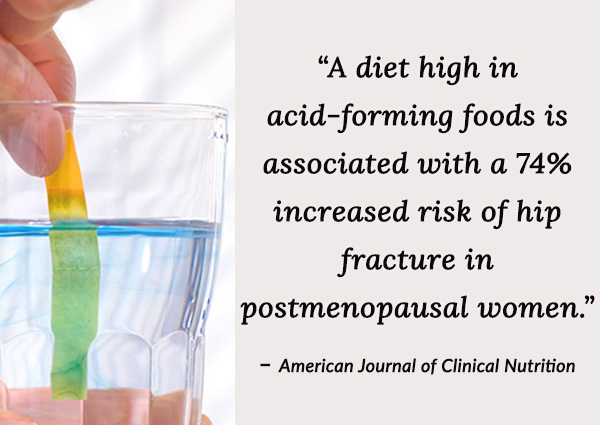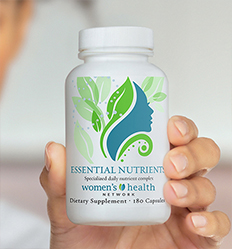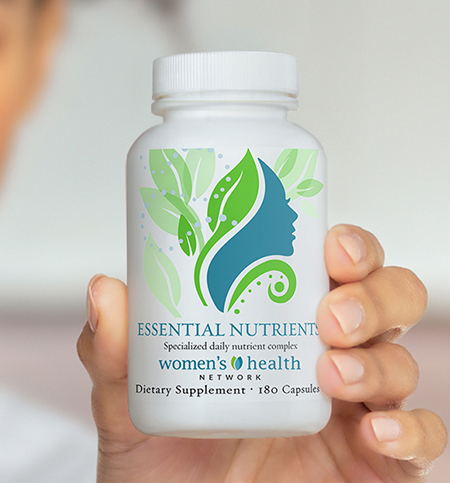Authored by Dr. Susan E. Brown, PhD
What is pH balance in the body and why is it important? You may vaguely remember pH from biology class, but not realize how much the right pH balance in your body reduces health risks, including bone loss, heart attacks and Alzheimer’s disease.

Do you know your pH? Unfortunately, our modern diets and lifestyles often tip our pH balance into the warning zone. So it’s time to find out! Here’s how you can. And also what you can do to protect yourself against the damage that can be done by low body pH balance.
What is body pH balance?
When your pH is balanced, your body is at an alkaline state – and that’s good! It means your body is able to buffer harmful acids and keep your systems operating the way they should.
When your body pH balance is tipped toward acidic, your body’s systems can’t keep up with the amount of acid in your body. As a result of excessive acid, your body may take alkalizing minerals from your bones or suffer from inflammation that can lead to disease.
What’s the right pH balance?
You should aim to keep your body’s acid base (pH) between 6.5 (slightly acidic) and 7.5 (slightly alkaline). On the pH scale, the lower the pH reading, the more acidic the solution is.
What are the dangers of low pH?
Your body can usually handle an occasional heavy acid load without taking too much from your alkalizing reserves. But many of us are constantly producing excess acids, especially through our diet. Without a way to neutralize them, your body struggles to maintain a healthy blood pH. It can also contribute to serious health issues, including:
- Inflammation and disease. When your body struggles to maintain blood pH required for survival, it can result in inflammation. Over time, this can lead to an increase in the pro-inflammatory blood acid homocysteine in your blood. Studies show that high levels of homocysteine in the blood double the risk of inflammatory conditions like:
- Heart attack
- Stroke
- Alzheimer’s disease
- Bone loss, osteoporosis and osteopenia. The bones are your storage bank for alkalizing minerals, so when your body has to drain the “account” to offset acid overload in the digestive tract, your bones are harmed. This can lead to loss of bone density, osteopenia or osteoporosis. A report published in the New England Journal of Medicine explains how elevated homocysteine levels inhibit new bone formation by interrupting the cross-linking of collagen fibers in bone tissue.
How can you test your pH?
You can test the pH of your saliva and/or your urine with simple litmus strips. These are available in our SHOP or at most pharmacies. You’ll want to track your pH for a few weeks to see any patterns that develop over that time. The test should come with a color-coded chart to determine your pH reading.
If your test results show that you are “acidic” the next step is to look at the source of the acidity. And what you eat is the most common factor.

Eating to improve your pH balance
Most of the food we eat has the potential to alter our pH. When digested, some foods leave acidic by-products in the body (acid-forming foods). Others leave alkaline by-products (alkaline-forming foods). When you eat a diet full of vitamins and minerals, your body is supplied with the nutrients it needs and doesn’t need to raid your bones’ resources. Getting enough nutritional support every day can protect you from serious consequences for your bone health and your overall health.
Here are some ideas on how to restore pH balance to your diet, support healthy digestion, keep blood pH levels on track, and protect your bones and kidneys, too.
- Add more green foods to your plate. Green foods or drinks can contain the pigment chlorophyll in abundance. Chlorophyll works in the body as a strong detoxifier and immunity–building agent. Foods that contain high levels of chlorophyll include the algae Spirulina and Chlorella and the juice of wheat grass and other sprouted grains.
- Add fresh lemon to alkalize. Even though we think of citrus as acidic, lemons are alkalizing because as we eat them, they break down and donate alkaline mineral salt compounds like citrates and ascorbates. Enjoy!
- Choose root vegetables. Eating foods such as slow-roasted sweet potatoes, onions and leeks, which are also high in inulin, can optimize your body’s ability to fully absorb the calcium present in your food and thereby decrease your risk for osteoporosis. Inulin is a type of prebiotic — used to help beneficial bacteria to thrive further down into the colon, where it lowers the pH and improves the solubility and absorption of calcium by the body. Root vegetables are also a great replacement for refined carbs.
- Avoid refined sugar whenever you can. Soda and fruit juice with high-fructose corn syrup, aspartame or other chemicals make your urine too acidic to pass out of your body safely. That means your body has to use high amounts of buffering minerals so it can excrete the acid without damaging your urinary tract.
- Eat plenty of vegetable protein, watch your red meat intake and keep your servings of the acidifying animal proteins down to four ounces per meal (the size of a deck of cards).
- Take a high-quality multivitamin. If you find that achieving the ideal pH balance with diet alone is difficult, you can complement your diet with supplements. Taking a daily supplement helps fill any nutritional gaps and ensures that your body has the reserves it needs. It should contain essential vitamins and minerals, including calcium and magnesium in their most bioavailable, alkalizing forms.
Acid-forming and alkaline-forming foods
Considering whether a food is acidifying or alkalizing in the diet can require some mind-bending. Some foods that we think of as “acidic” are, in fact, alkalizing in the diet. The case of lemons in the second point above is one good example!
It’s actually better to look at whether the food is an acid–forming food or an alkaline–forming food, not where the food itself falls on the pH scale.
Paying attention to your pH is an immediate and positive change for your health that you can make today!












